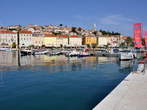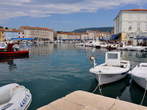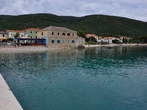Nerezine is a tourist village located at the foot of Osorscica. The place was already mentioned in the 14th century as one of the larger settlements on the island of Cres. The tourist boom of Nerezine began in the 19th century, which is due to the Austro-Hungarian heir to the throne, Rudolf Habsburg.
In Nerezine, the inhabitants used to be engaged only in agriculture, but in more recent times they turned towards the sea and began to engage in shipbuilding, seafaring, fishing and tourism. In 1920, precisely because of this, the first sailing regatta of wooden pasars took place in the place, which then took place once a year until the war in 1942. The regatta came back to life in 1954 and, along with other games at sea, took place until 1965. The Jugo sailing club from Mali Losinj was credited for its revival. The tradition was revived recently and the regatta takes place every year in the month of September. The wooden belt competition takes place in three categories (guc, gajeta and leut, batela). Everyone, locals and visitors, are invited to this event. In Nerezine, accommodation is available to visitors in two camps, two family hotels, two tourist settlements and private accommodation providers. The largest cultural attractions in Nerezine are the parish church of Our Lady of Health from 1877, the Franciscan monastery from the 16th century, which has a three-story Renaissance bell tower, the original parish church of St. Mary Magdalena from 1534 and the castle of the Osor noble Kolon Draza from the 15th century.
In the church of St. Mary Magdalena is a permanent exhibition of models that show the traditional way of life in Nerezine. Mountain trails lead to Osorscica, where mountaineers can admire the peak of St. Mikula and the chapel.
























 from 200.6 €
from 200.6 €